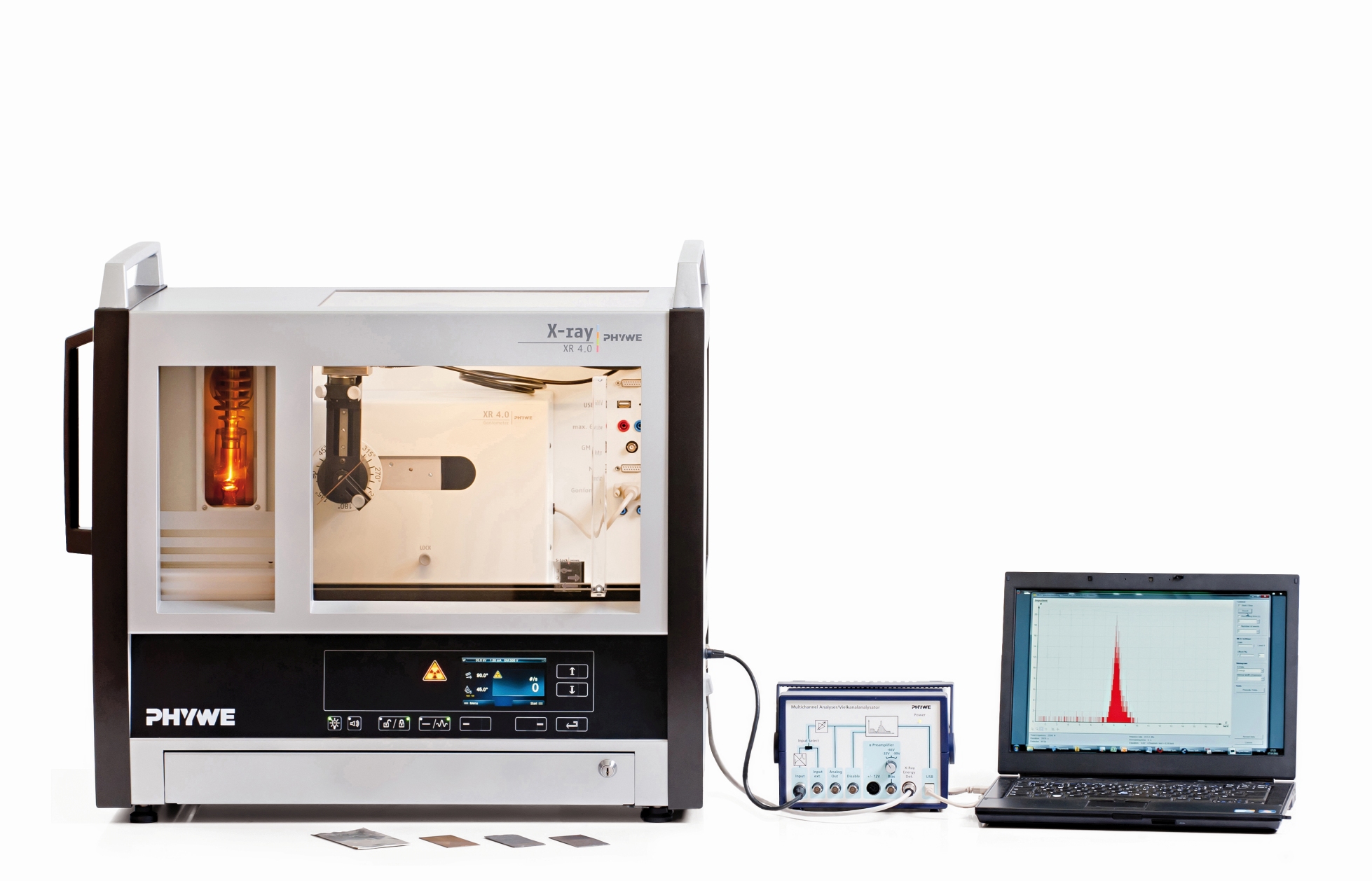Principle
Various metal samples are subjected to polychromatic X-rays. The energy of the resulting fluorescence radiation is analysed with the aid of a semiconductor detector and a multi channel analyser. The energy of the corresponding characteristic X-ray lines is determined and the resulting Moseley diagram is used to determine the Rydberg frequency and the screening constants.
Benefits
- Experience the essence of the Nobel Prize: Röntgen (1901)
- X-ray fluorescence analysis (XRF) of different alloys
- Other alloys are also possible
- X-ray energy detector (XRED) with multichannel analyzer (MCA) guarantess high counting rates without warm-up time
Tasks
- Calibrate the semiconductor energy detector with the aid of the characteristic radiation of the tungsten X-ray tube.
- Record the spectra of the fluorescence radiation that are generated by the metal samples.
- Determine the energy values of the corresponding characteristic K α- and K β-lines.
- Determine the Rydberg frequency and screening constants with the aid of the resulting Moseley diagrams.
Learning objectives
- Bremsstrahlung
- characteristic X-radiation
- Absorption of X-rays
- Bohr's atom model
- Energy levels
- Moseley's law
- Rydberg frequency
- Screening constant
- Semiconductor energy detectors
- Multichannel analysers

